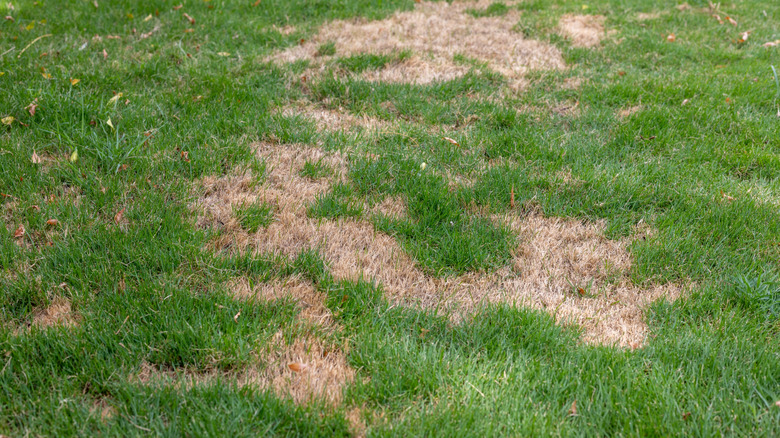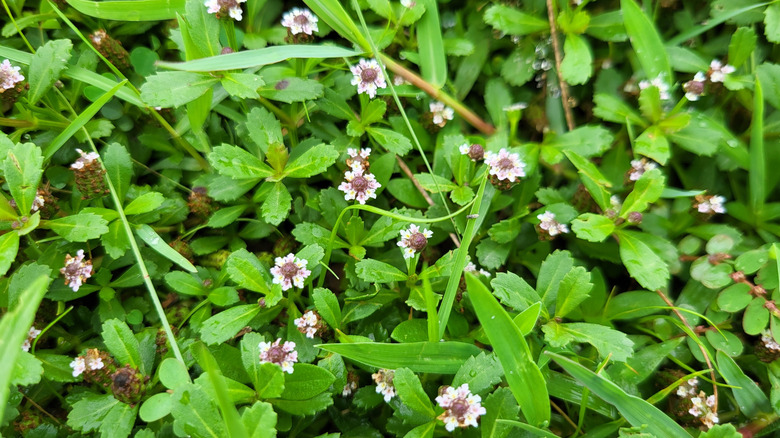The Low-Maintenance Ground Cover That'll Effortlessly Fill Patchy Areas Of Your Lawn
There is nothing as frustrating as a patchy lawn. Patches can be caused by a range of issues, from common lawn diseases to the over-application of fertilizers. If you live in a warm climate, drought is a common issue when it comes to lawns, leaving you with brown, dead areas of grass. When this occurs, it can be challenging to fix the problem, but that doesn't mean that you need to live with an unsightly lawn. Instead of spending time and money trying to salvage the dead grass, you may wish to consider planting Kurapia (Phyla nodiflora). This low-maintenance, low-water ground cover may be your next best friend, providing you with greenery even during the hottest summer months. In an irrigation study of turfgrass conducted by the University of California, Riverside, Kurapia performed the best under minimum rainfall and deficit irrigation, maintaining its color and health despite a lack of water.
Belonging to the verbena family, Kurapia was cultivated in Japan and designed to be hardy, tolerant, and drought-resistant. It thrives in a range of temperatures and soils, and is perfect for warmer climates of USDA Hardiness Zones 7 or higher, where grass can often suffer. With a deep root system, Kurapia can stabilize soil on slopes. Plus, if you love bringing biodiversity into your garden, the tiny, white flowers that bloom in spring and summer are loved by bees!
How to grow and care for Kurapia
Kurapia can be added to the patches of your lawn by plugs, which can be planted all year round. Make a hole that is 2 inches wide and 3 inches deep, and place the plug in the hole. Ensure that they are planted slightly lower than the surface of your lawn, as this will help them establish themselves. You don't need to fertilize your Kurapia, but keep it moist as it settles in by watering regularly. Remove any weeds that crop up around your plugs, but try to avoid herbicides. After planting plugs of Kurapia, it will take around three or four months for them to fully establish themselves.
Once your Kurapia plugs have settled in, your patchy lawn will start looking much healthier! As Kurapia is low-maintenance, you won't need to do much to keep it looking good. If you prefer the look of bushy grass with long leaves and flowers, you may want to avoid frequent mowing. Kurapia can reach up to 3 inches in height. However, if you want a more carpet-like look to your yard, mow your Kurapia at least once a month. When the winter months arrive, Kurapia will start to slow its growth. It may die back during the colder months, depending on your climate, but the greenery will return again in spring. When spring comes around, you may want to give it a balanced, organic liquid fertilizer to speed up the growth. Hopefully, your lawn has transformed into a stunning green oasis that you can enjoy year after year, thanks to Kurapia.

